Ajanta Caves
By Smita Bhattacharya
What are the Ajanta Caves?
Ajanta Caves are Buddhist cave monuments dating to between the 2nd and 1st centuries B.C. and located in the Aurangabad district of Maharashtra in Western India. The thirty caves are at various degrees of completion and were further enhanced during the Gupta period in the 5th and 6th centuries A.D.
Disclosure: This article contains affiliate links. Making a purchase through an affiliate link will mean a small commission for this website. This will not affect your price.
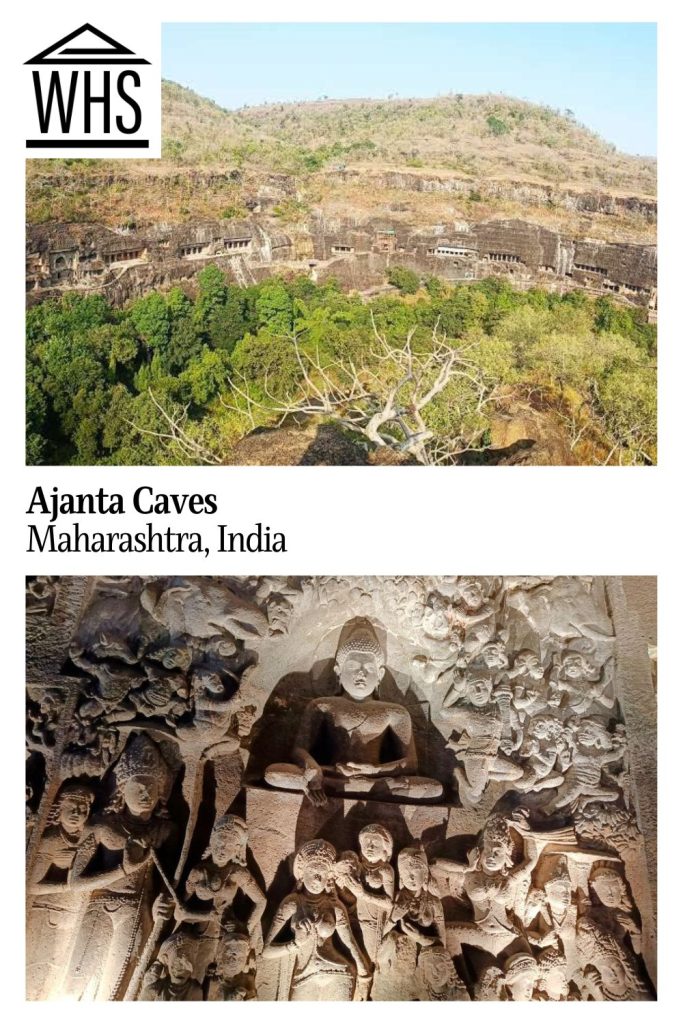
Excavated out of a vertical cliff above the left bank of the Waghora River, rock-cut staircases connect the ancient site to the water below, though most are degraded due to age. These ancient wonders are now a major tourist attraction, with thousands of people flocking every day to admire this UNESCO World Heritage site.
Why are the Ajanta Caves a UNESCO World Heritage site?
According to UNESCO’s website, “With its two groups of monuments corresponding to two important moments in Indian history, this rupestral ensemble bears exceptional testimony to the evolution of Indian art, as well as to the determining role of the Buddhist community, intellectual and religious foyers, schools and reception centres in India during the Satavahana and Vakataka dynasties.”
In short, the Ajanta Caves are a marvellous example of ancient Buddhist art. The Ajanta style has been influential elsewhere as well, particularly in Java.
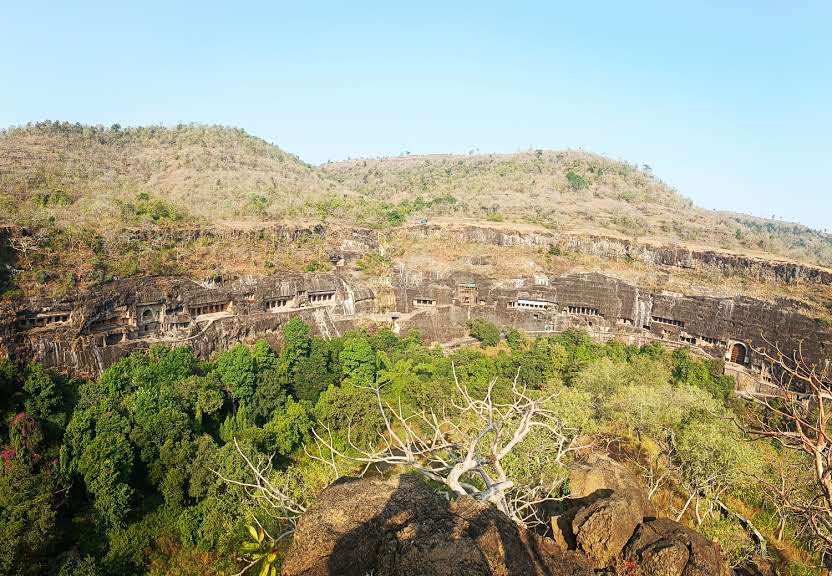
What can you expect on a visit to these caves?
Carved into cliffs, the caves show the highest skill of ancient Buddhist rock carving. These caves are like a time machine, taking you back to ancient India. You’ll see amazing paintings, sculptures, and even writings that tell the story of Buddhism and the people who lived then. It’s like a whole world hidden in the rocks! I got goosebumps just standing there and staring at the enormous edifices with the stunning paintings and sculptures.
There are 30 caves in all and some are unfinished. Sixteen of them contain murals; the best are in caves 1, 2, 16, 17 and 19. The best sculptures are in 17, 19, 24 and 26.
Five caves date to the earliest period: 8, 9, 10, 12, 13 and 15A; Cave 10 is the oldest. The rest were added in the second period of cave-building at the site.
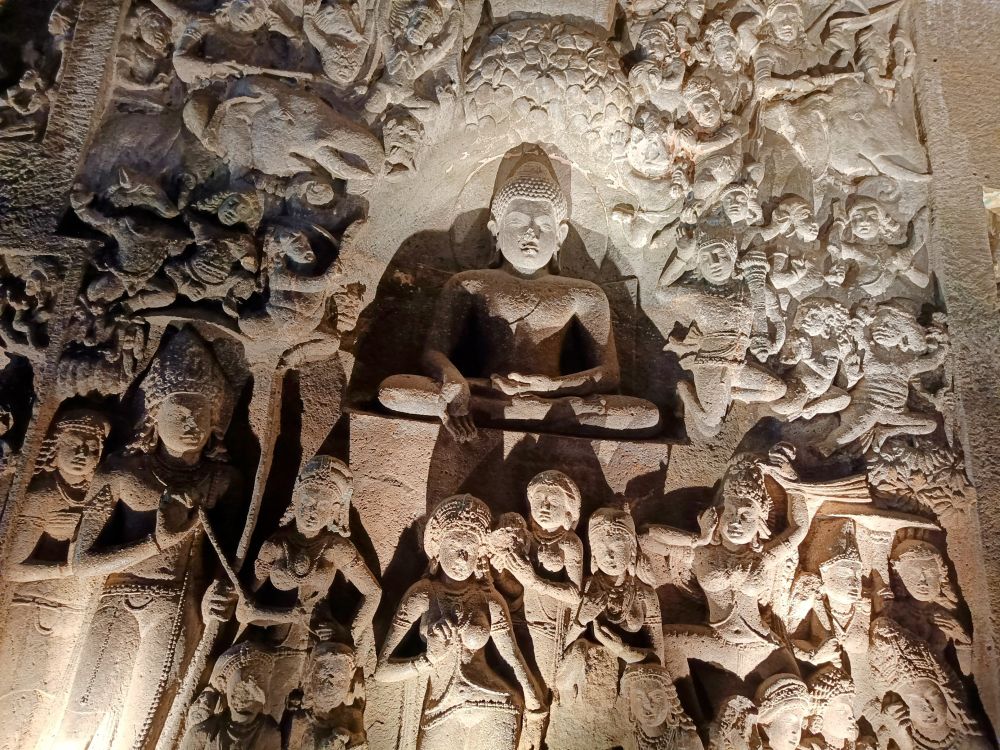
Are the Ajanta Caves worth visiting?
Imagine a secret city carved into cliffs, high above a river. The Ajanta caves are like a treasure chest filled with Buddhist stories, carved in stone and painted on walls. Ajanta Caves aren’t just rocks and paintings; they’re a reminder of how powerful faith and creativity can be. The Caves are a place to be quiet and think, and feel amazed by what people could do centuries ago. Therefore, it’s definitely worth visiting.

What sorts of travellers would like the caves?
Art enthusiasts, particularly those interested in Buddhist art, and history buffs will find the Ajanta Caves captivating. These caves, also an important pilgrimage site for Buddhists, are in a breathtaking natural setting, sure to enthral nature lovers as well. Families with children will also appreciate this destination as the caves are easy to explore and feature educational exhibits that illuminate the site’s history and significance. Pair a visit to Ajanta Caves with a visit to the nearby Ellora Caves and other historical attractions in Aurangabad over a weekend.
Tips for visiting the Ajanta Caves
The caves are located about 105 kilometres (65 miles) from Aurangabad, India. All the hotels in Aurangabad provide taxi services to the caves at various rates. You can also consider staying close to the caves in the Maharashtra Tourism Development Corporation (MTDC) hotel which runs regular daily tours to the caves.
The must-see caves are 1, 2, 9, 10, 16 and 26.
Aurangabad gets pretty hot in summer, so the best months to visit are from November to February. The caves are closed on Mondays.
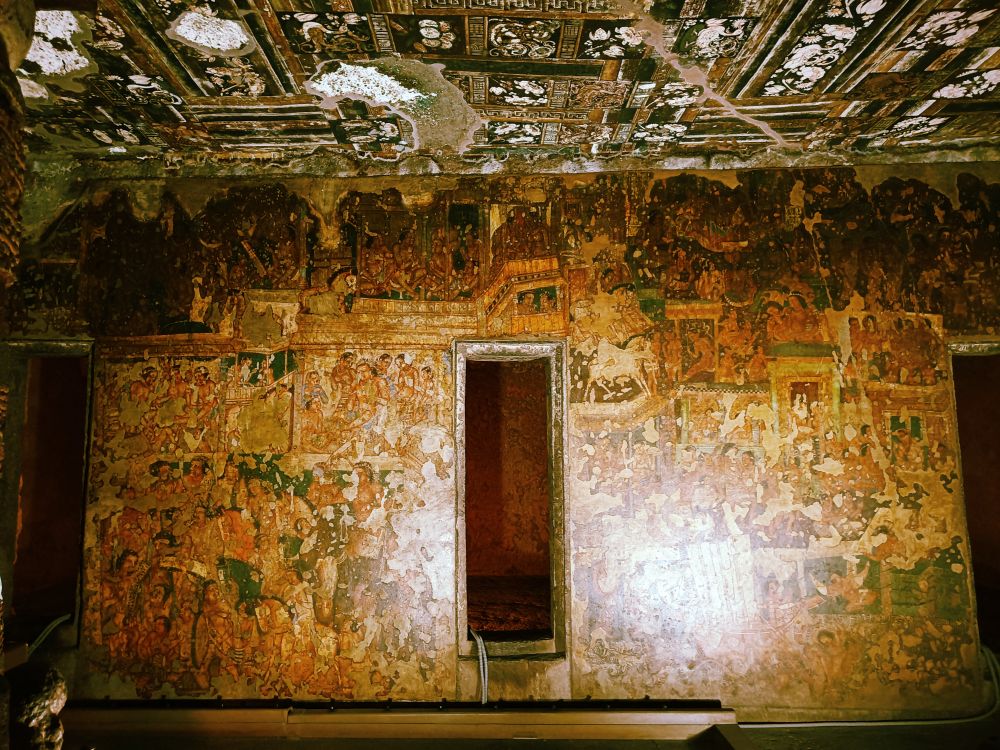
You might also enjoy visiting Ellora Caves, not far away from Ajanta Caves, and also Elephanta Caves, on an island off the coast of Mumbai.
Where are the Ajanta Caves?
The Ajanta Caves are located 105 km away from the city of Aurangabad in the western state of Maharashtra in India or about a two-hour drive. It is accessible from Aurangabad by car or buses. Renting a car is the most convenient way to see the caves and is relatively inexpensive. State Transport buses depart from the Aurangabad Central Bus Stand (CBS) every few hours, offering an inexpensive option.
Aurangabad can be reached by train or a 55-minute flight from Mumbai, India. The Jan Shatabdi is the fastest train from Mumbai. It takes 7 hours from Chhatrapati Shivaji Maharaj Terminus (CSMT) (a UNESCO site itself) and arrives at Aurangabad Station (AWB).
Use this link to book trains, buses and/or taxis.
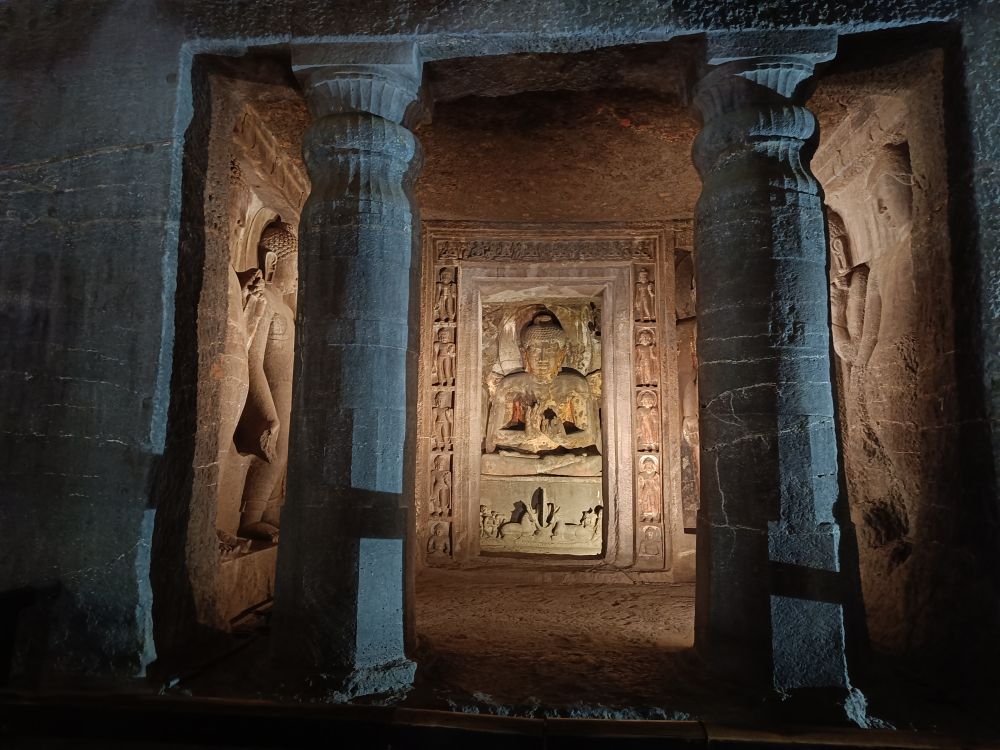
For more information about Aurangabad’s Ajanta Caves, opening hours, and admission fees, see the Archaeological Survey of India’s website.
Have you been to the Ajanta Caves? If so, do you have any additional information or advice about this UNESCO World Heritage site? Please add your comments below!

